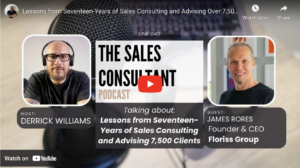While some of these companies may be serial deal hunters, there is no question – M&A will continue to be the vehicle of choice for business leaders who are looking to grow, transform or exit their business.
Even with all of these transactions going on, M&A is not a path to take lightly. This is often a major life event for a company that can permanently impact the wealth of shareholders and their families. Unfortunately, most executives pursue this course without the knowledge and expertise to position their company for success. Statistically, 94% of companies that attempt a deal will be unprepared, and only 12% of those attempts will result in a deal. In addition, most executives overlook the opportunity (or don’t give themselves the time) to increase their company’s valuation before pursuing a deal.
In the world of M&A, if you don’t have a plan chances are you will be part of someone else’s. It is never too late to begin thinking about and preparing for M&A success.
Performance is the Currency of Control
M&A deals follow one of two paths: either you’re proactively searching for an opportunity to grow, transform, or exit your business, or the opportunity finds you.
More often than not, emotions related to fear and greed convince buyers and sellers that when a deal looks good on paper it is likely to occur in reality. There are no shortcuts to M&A success, and the first place we recommend looking is at the ability of your sales leaders, people and systems to deliver predictable top-line growth before complicating their world with a buy/sell decision.
In our experience, there are more than 21 points of failure that will threaten a sales organization’s ability to maximize your valuation before a deal is considered and optimize your odds of success after a deal is closed. I would be happy to send you our list. In the meantime, here are ten questions you can ask and answer as part of your own self-evaluation:
- Do our systems and processes support a high-performance sales organization?
- Are our sales people consistently following an optimized sales process?
- Do we onboard and ramp-up new sales people fast enough?
- Are our sales and marketing organizations aligned and optimized for growth?
- Can we improve our sales pipeline quality, budgeting and forecast accuracy?
- What would improve our sales culture and commitment to overachieving quota?
- Do we (or our competition) hire and retain the best salespeople in our industry?
- Can we onboard, ramp-up and break even on new sales team members faster?
- Do our sales leaders and teams have what it takes to make us a market leader?
- Can our sales leaders improve their ability to sell value and grow margins?
Without building predictability into your sales organization prior to merging with or acquiring growth assets, your executives will be unable to predict the future value and return of your M&A investments.
Understanding Sales Predictability and Why It Matters in M&A
Companies don’t often consider how they look and function in a M&A environment, but how you compare to competitors does matter. As McKinsey and Company notes, “Companies are more successful at M&A when they apply the same focus, consistency, and professionalism to it as they do to other critical disciplines. (…) The ability to approach M&A in this way elevates it from a tactical necessity focused on risk management to a strategic capability delivering a competitive advantage that others will struggle to replicate.”
Simply put, being prepared for an M&A transaction from an outsider’s perspective is just as crucial as preparing internally.
If you’re pursuing M&A in your growth strategy, you must focus on how well your sales and marketing team can absorb a new product line or service into its existing systems and processes. You must consider how newly acquired products and services will continue generating optimal sales flow once you’ve solidified your rights to them.
If you’re selling a company or division, you’re not exactly off the hook. Your M&A valuation most probably included the acquiring company’s estimation of how likely your sales performance can be sustained or improved. They will be looking for balance across your customer base, revenue sources and gross margins. They will be looking for evidence that you can transfer unique differentiators, relationships, skills and competencies to their teams. The more confidence and evidence you can deliver, the more value (i.e. higher asking price) you can expect in return.
In Closing
There are myriad M&A firms that can help you handle the mechanics of completing your transaction, but they don’t always understand the dynamics of M&A success once the transaction is underway. This creates a risky situation for middle market companies who want to ensure they’ve made the best decision for their financial future and that of their stakeholders.
Establishing predictable growth from your sales organization can help you take control of the M&A process and ensure a more seamless process, from valuation through transaction and integration.
To better understand whether your sales organization can help you take control of the M&A process, contact us for my Sales Effectiveness Scorecard, which includes the 21 points of failure I referred to earlier. We are happy to help.










